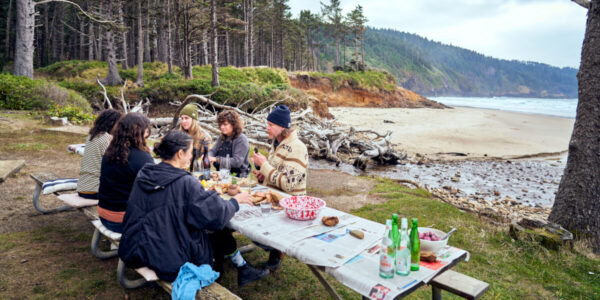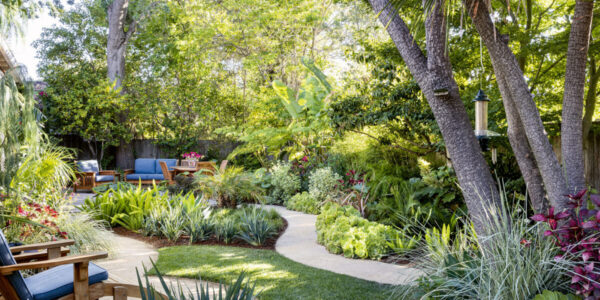
This Storied 1960s Hawaiian Resort Is Reborn as the Ultimate Tropical Getaway
On a return trip to the Big Island of Hawaii we revisit Kona Village, a reborn resort that connects past and present.
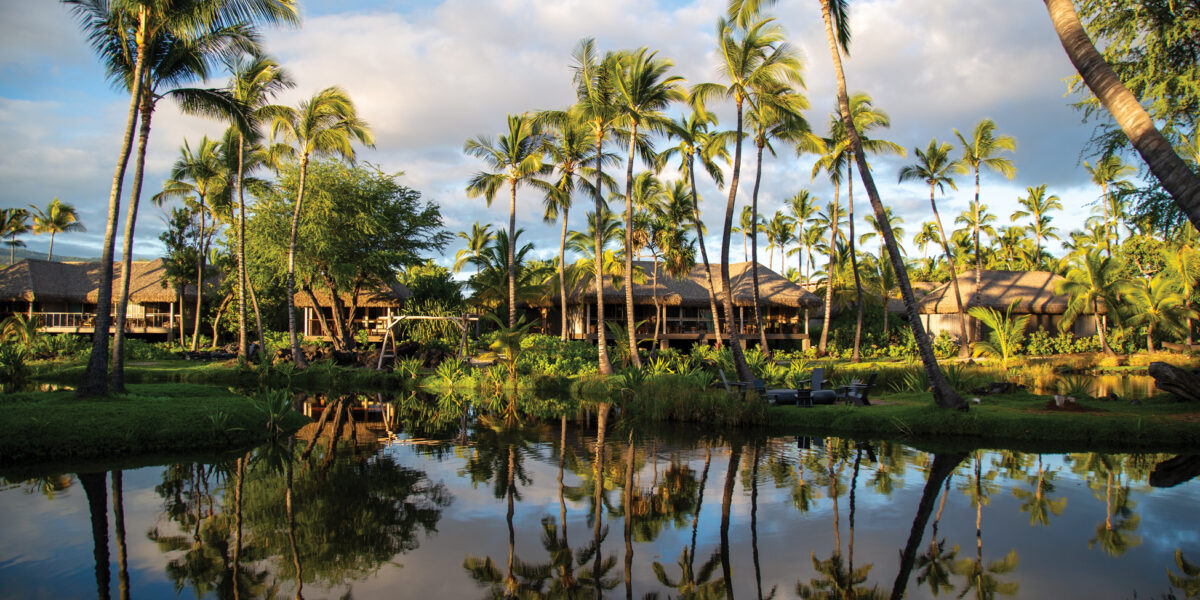
I’m at Kona Village, a resort on the Big Island of Hawaii, listening to Auntie Lei tell stories about the tsunami of 2011. Under the canopy of a koa tree, in an open-air cookhouse built of lava rocks gathered from the eruption of Mauna Loa in 1855, sit a scuba instructor, a lawyer, several retirees, and their children and grandchildren. This group of guests has been coming to the resort off and on over the past 50 years, and this is a reunion of sorts. Kona Village, which first opened in 1965, has just reopened again after being closed for over 10 years, and these legacy guests have been invited by the resort to meet with Auntie Lei, a legendary employee who has worked by turns as a server, a hula dancer, an activities director, and now a cultural ambassador. They all know her from past visits, and they listen, rapt, as she tells the story of the night the tsunami barreled through, tore the thatched huts from their pylons, blew out the windows of the main dining room, and pulled an outrigger out of the bay, launching it over the beach, past the guest cottages, and into the anchialine ponds at the back of the resort.
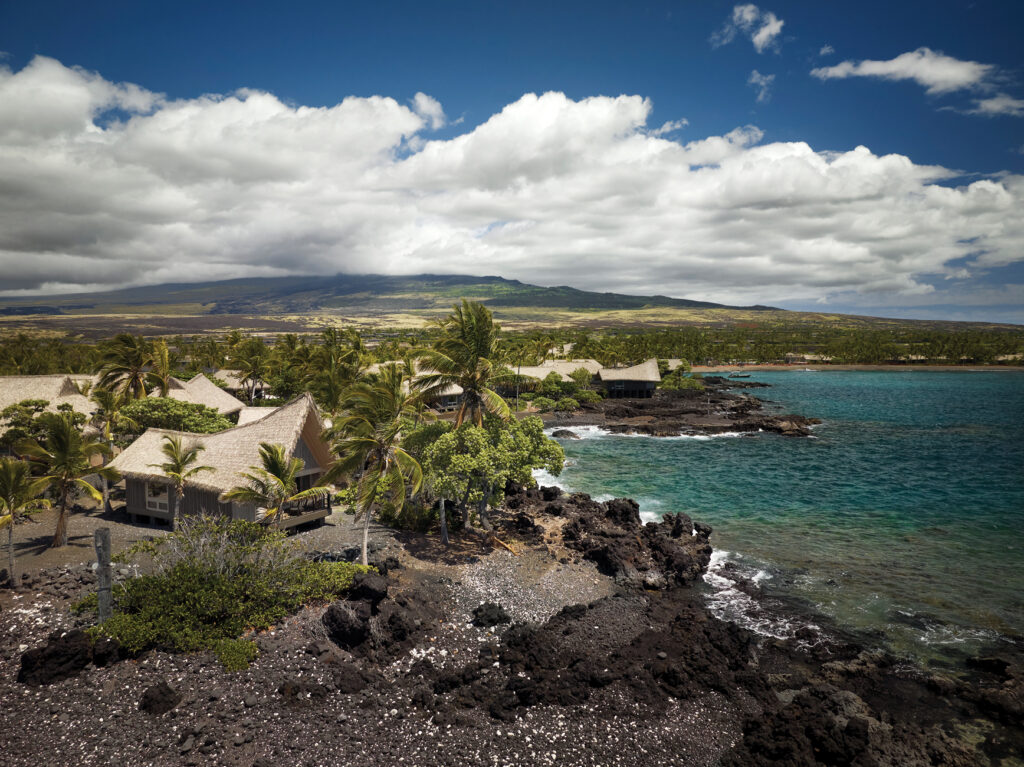
Kona Village, A Rosewood Resort
In one massive wave, the tsunami ended the decades of annual repeat visits from the people at the table in the cookhouse, and left the property in redevelopment limbo for the next twelve years. This year it finally reopened as a Rosewood Resort, and it’s a stunner. It’s a gleaming property crisscrossed with crushed-coral pathways luminous under the moon and flickering torches. Infinity pools overlook a protected bay lined with leaning palms. Well-appointed cottages hug the dramatic black-lava coast. It’s the sort of low-slung, luxurious retreat that visitors fantasize about when they envision the simple version of what they want Hawaii to be.
The pre-tsunami Kona Village was a hotel that time forgot, and over the years had developed a cultlike following because it resisted change. Originally opened in 1965 by Johnno Jackson, an avid sailor who wanted to create a tropical island fantasia, Kona Village was a time machine, a dream factory, a memory maker. For the first few years the only way to reach it was by plane, cut off as it was by fields of lava flow. The old schooner Jackson, which had sailed around the South Pacific and sunk in the bay one day, was pulled up onto the beach and became the shipwreck bar. Thatched-roof huts known as hales, with no TVs and no air-conditioning, dotted the beach.
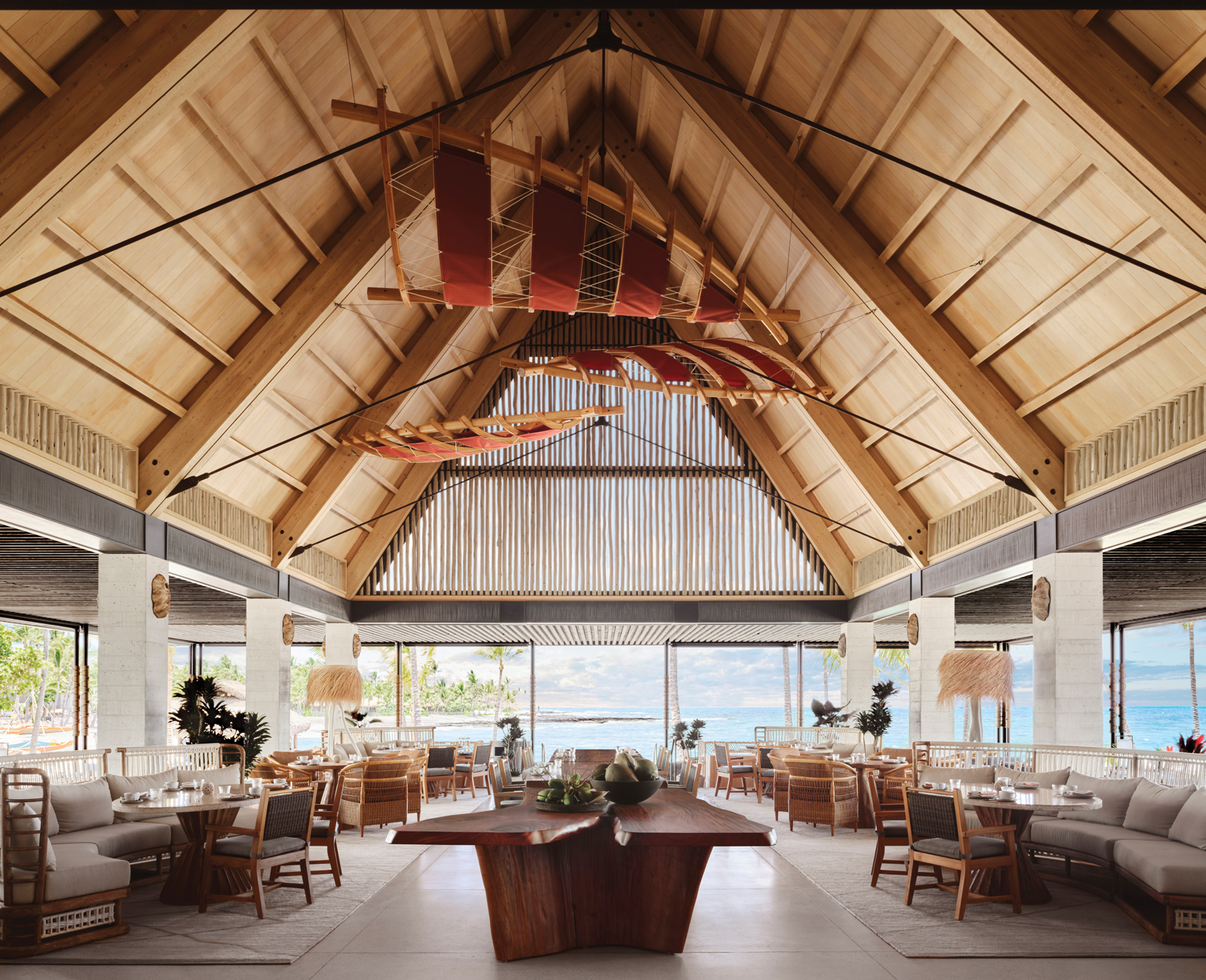
Kona Village, A Rosewood Resort
On my first visit, 17 years ago, I stepped back in time to a hotel that hadn’t changed much since it opened. There was a stocked fish pond with a rack of bamboo fishing poles that unsupervised kids swung freely, hooks and all, as parents sipped mai tais by the pool. There were rumors that you could purchase weed from the beach hut. It was the sort of place where families would return year after year, eventually earning a coconut with their name on it that would sit in the dining room. There were luaus, an abundant buffet of white honey, guavas, and lilikoi, Kalua pig with mahogany skin crisp from the imu, lazy lunches of grilled burgers and local tuna sashimi. Locals worked there for decades, their names on handwritten signs in garden plots they tended. It wasn’t fancy, but it was a perfect antidote to the grander, multilevel resorts up and down the coast.
There were puzzling quirks that could either charm or challenge, depending on the guest: green plastic dining chairs that looked like they could’ve been bought at a hardware store. No AC in an area where 90-degree temperatures weren’t uncommon. It wasn’t for everyone, unless they understood the power of imperfection. Steve Jobs was one of its most famous repeat guests, and Kona Village was one of the few places he could fully unwind. It was the polar opposite of the minimalist, controlled, black-and-white digitized world he’d invented. On my first visit I walked up to the beach to take in the view and stood behind a man gazing out at the ocean. He turned around, and it was Jobs himself. I now realize it was the same year he’d been diagnosed with the cancer that eventually killed him. But there he was in his Issey Miyake mock turtleneck despite the tropical heat, with a beatific smile on his face, as relaxed as a person can be, and, for a moment, immortal.
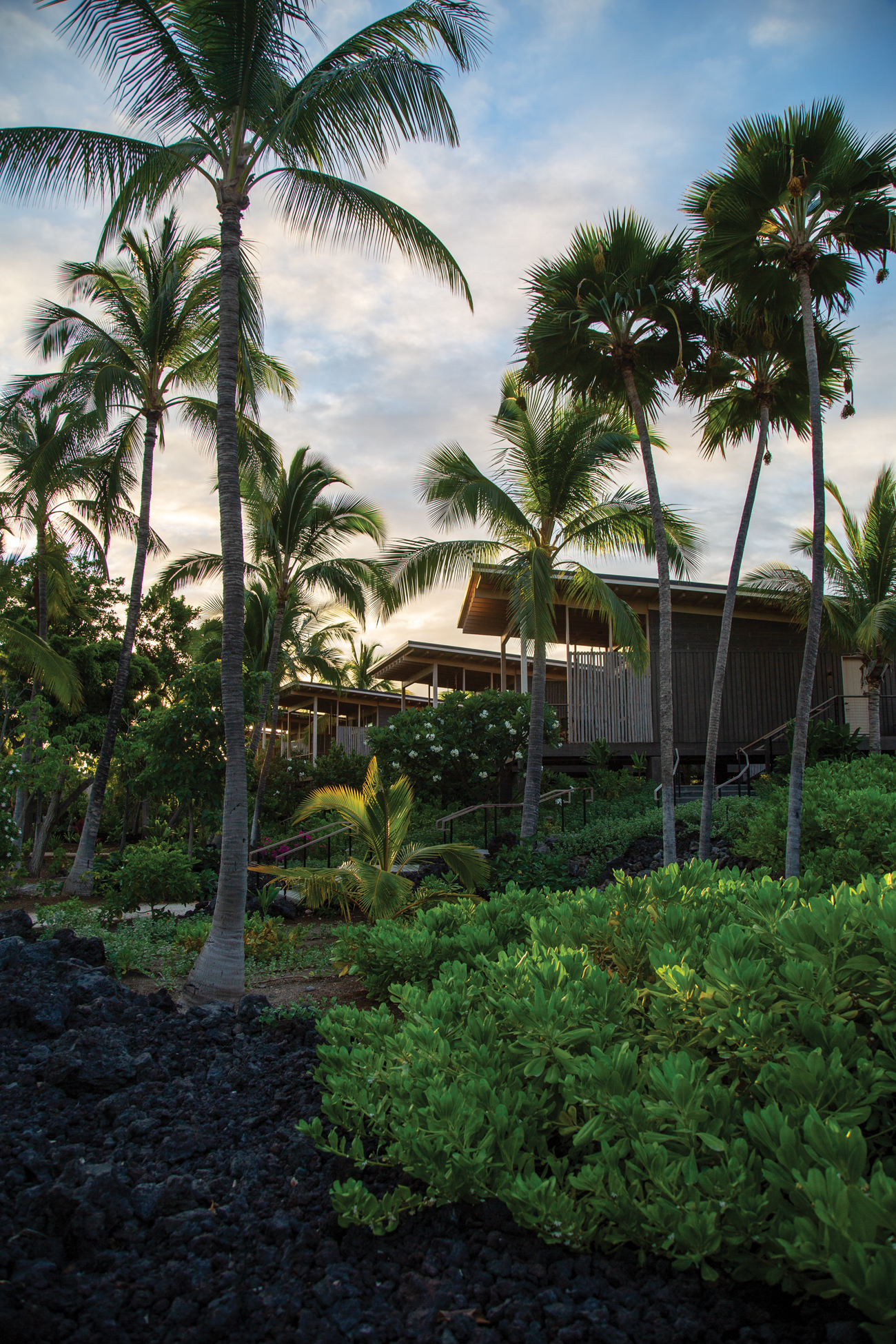
Hugh Garvey
We all know, now more than ever, that Hawaii is many things beyond escapist dreams. The devastation of Lahaina on Maui is a tragic reminder of the fragility of the islands, where the threats of fire, tsunami, and volcanic eruptions are a reality. These aren’t the things we usually talk about when we talk about travel, but there at that table in the old cookhouse in the lava flow, the passing of time and the passing of loved ones and the importance of keeping that all in one’s mind were front and center. The old-timers remembered employees and guests who’d passed away over the years, and they spoke of how when they’re gone they hope their children’s children will play under the koa trees like they did. Auntie Lei spoke of the destructive but also generative power of the volcanoes. She proudly told the group how she and other employees and locals had rallied to push through a moratorium on overfishing of the coast just outside the resort and how over ten years the fish population was returning. In the middle of our vacation, instead of checking out, we checked in with each other and our place in this world.
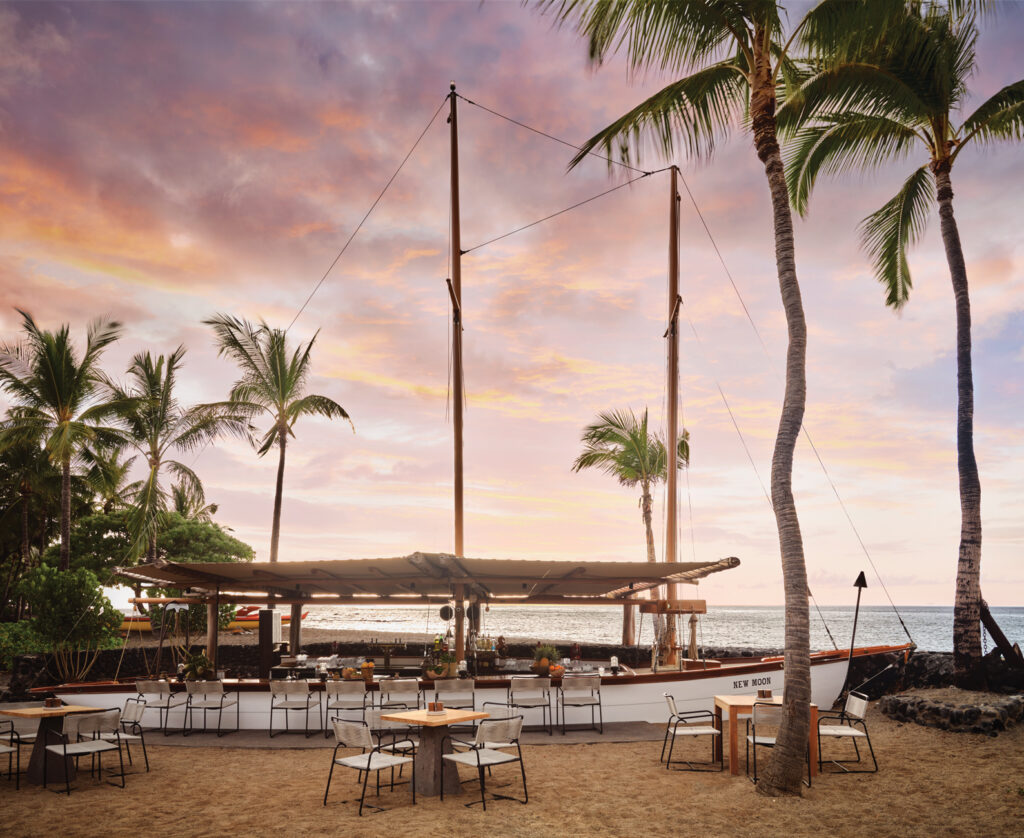
Kona Village, A Rosewood Resort
At the new Kona Village, the plastic chairs are gone and there’s air conditioning in all the rooms, which are meticulously decorated with minimalist, modernist tropical furniture Jobs himself might have approved of. While the tones are subdued, the upgrades are numerous, and the resort has gone decidedly low-key luxe. Knowing the possibility of new multigenerational traditions, there are private villas with multiple bedrooms, full kitchens, and butler service. Several hales have balconies pushed up to the edge of the lava flow, the mist of the ocean mere yards away, with that edge-of-the-world feeling that modern zoning doesn’t allow for anymore. The pools are grander, with infinity edges and attentive service and octopus tostadas and mezcal cocktails. The spa is as Japanese and Scandinavian as it is Hawaiian in its design; treatment rooms and lounge areas have sweeping views of Mauna Loa. Fresh coconuts spiked with rum are trotted out on a cart in the afternoon. The restaurants reference Noma as much as they do Kona, with satisfying sticky pork ribs alongside more conceptual dishes. And the shipwreck bar is exactly where it was when it was pulled up and out of the bay back in the 1960s, although you can now get a negroni made with rare gin from the Black Forest if you’re not in the mood for a mai tai.
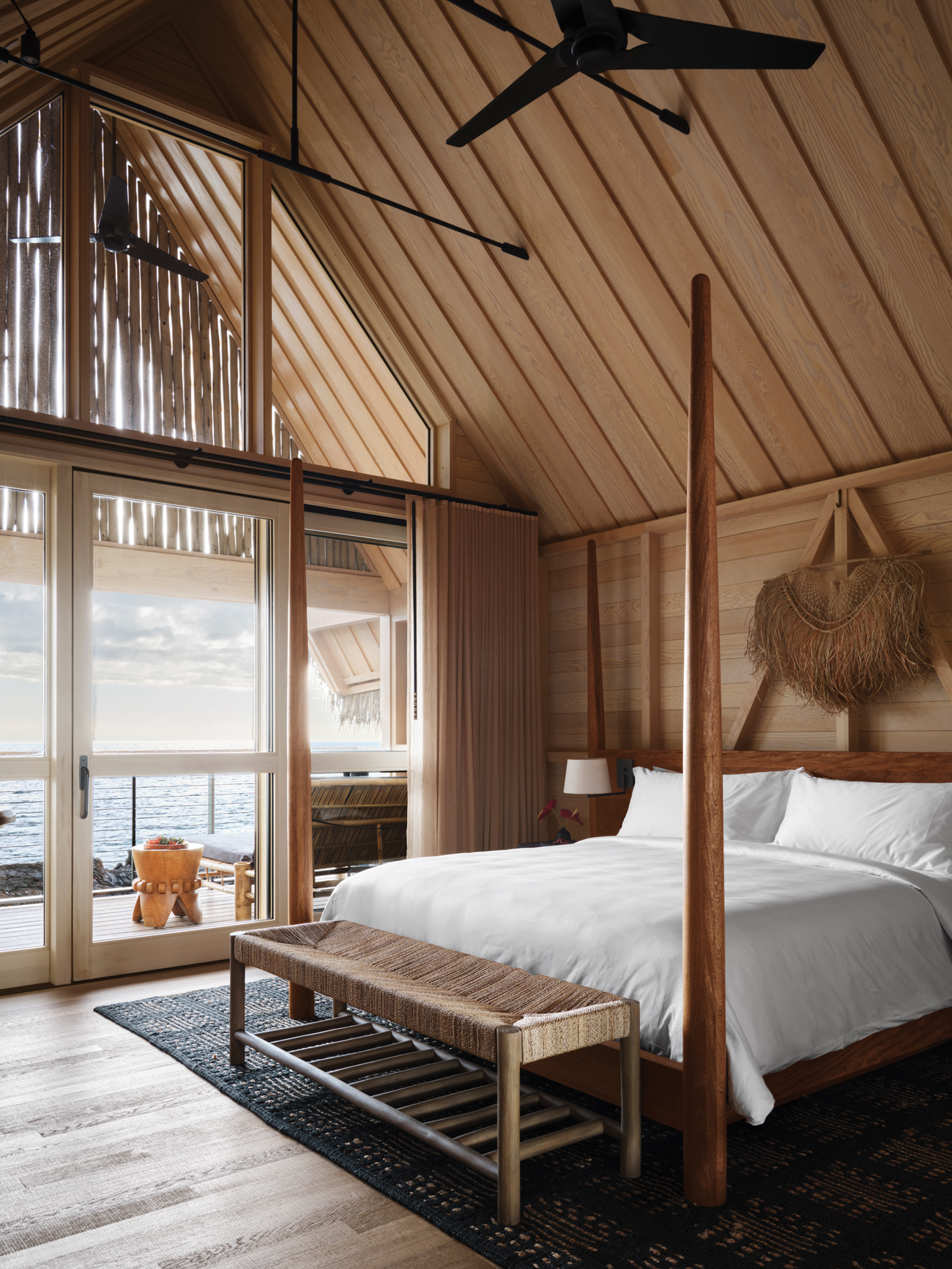
Kona Village, A Rosewood Resort
One day at the pool, I meet a family who’ve been coming to the resort for decades: The grandfather is in his nineties, his kids in their sixties, and their kids in their twenties. They reminisce about their late grandmother on past visits and wonder if the new guests would understand the magic of the place. While the past is the past, the new resort was rebuilt with sustainability and cultural responsibility in mind. The fish ponds are no longer catch-and-release, the invasive tilapia that swim in them (and that guests catch) are now fed to rehabbed seals at a nearby animal sanctuary. The resort boasts the largest solar array in Hawaii; once online, it will remove the resort from the power grid. A weekly farmers’ market hosts local vendors for free.
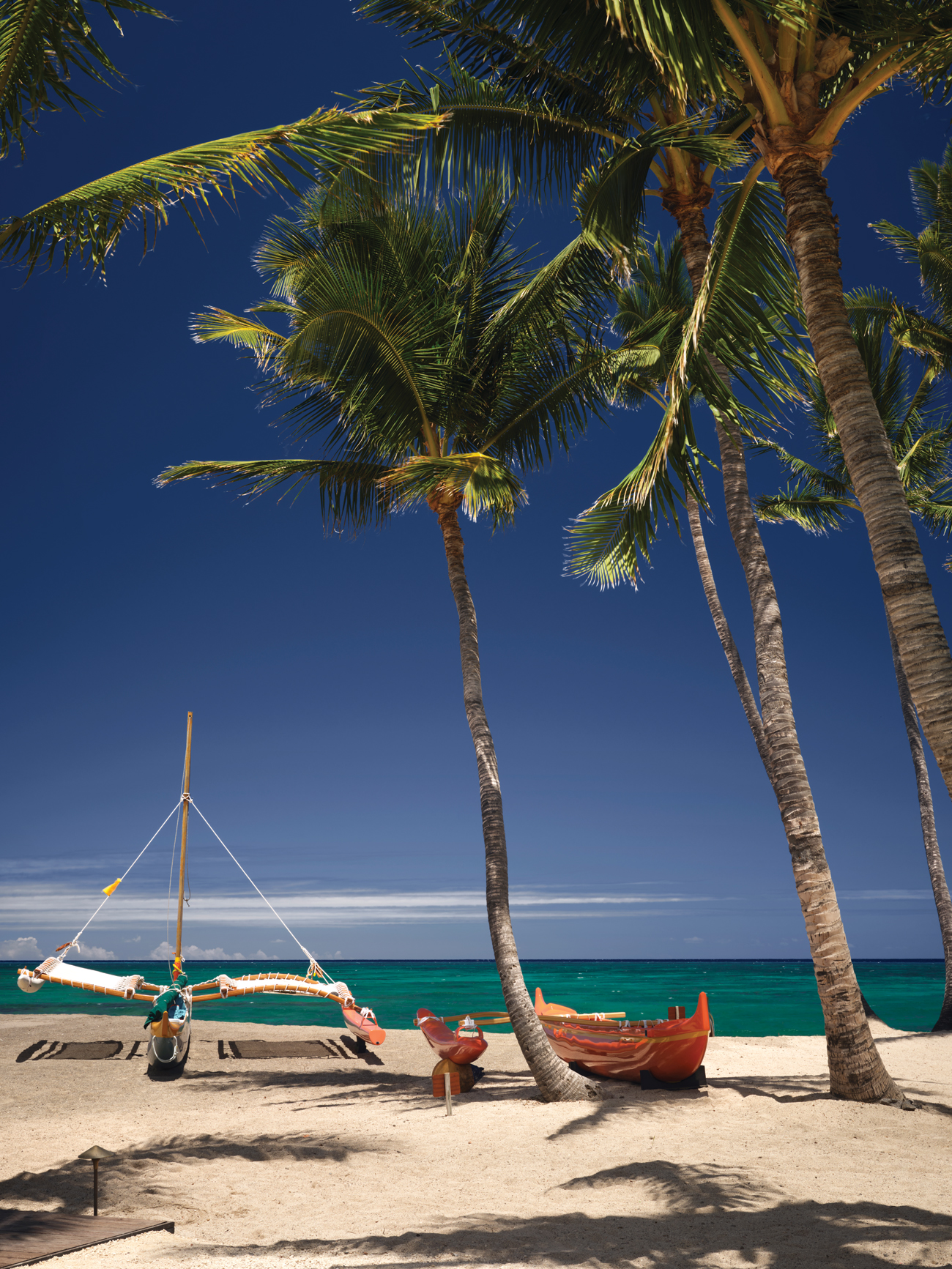
Kona Village, A Rosewood Resort
One strikingly clear morning, I paddle out up the coast on an outrigger with Kalani, a local guide who takes me to a spot where sharks pull up and let reef fish clean them. He tells me that working at the resort gives him the ability to be able to directly educate visitors on the fragility of the ocean ecosystem. Later I tour petroglyphs on the edge of the resort. It’s an on-site museum of the area: Sail designs and hunting scenes dating back to the 1800s are etched into the lava.
Back at the cookhouse, the old-timers talk of the people who’ve passed, and I realize paradise, and its connotations of the afterlife, is a word we use to describe Hawaii. Auntie Lei hands out native grass and everyone starts weaving garlands and picture frames and hats. The reunion officially comes to a close, but the legacy guests and their kids and their kids linger, sitting around a table as Auntie Lei continues to tell stories. Nobody gets up. They weave grass and listen. They can’t know for sure if or when they will be back, so they stay and make a memory to keep forever. They focus on their weaving and listen to Auntie Lei. They don’t want to leave.
